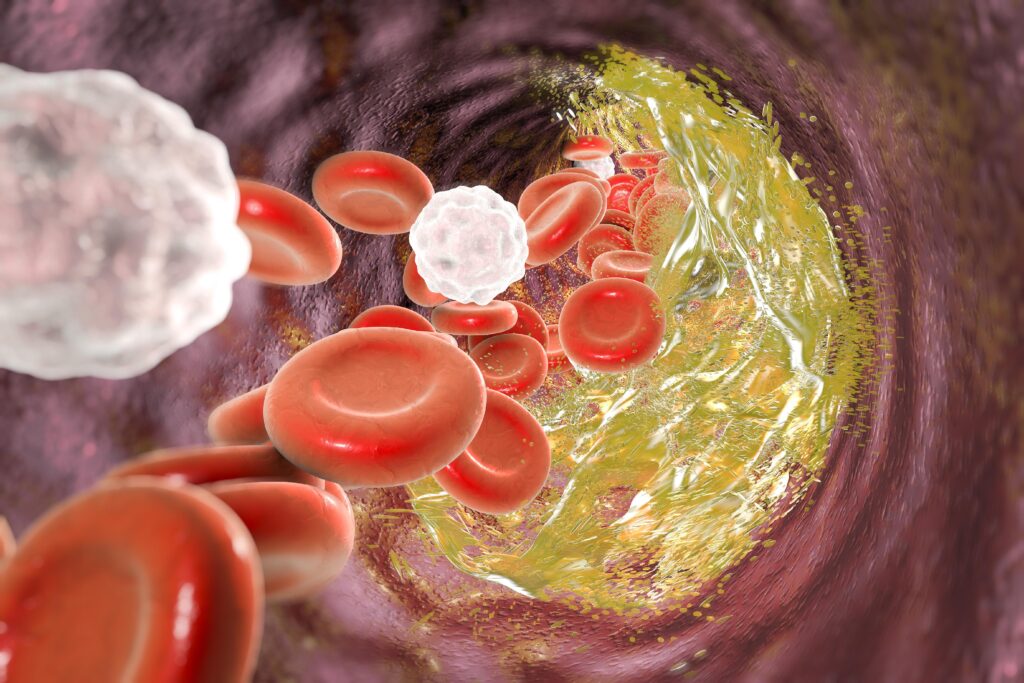Coronary Atherosclerosis Progression with CGM
The OPTIMAL Trial Investigates the Impact of Continuous Glucose Monitoring on the Advancement of Coronary Atherosclerosis in Patients with Type 2 Diabetes
Continuous Glucose Monitoring (CGM) and its potential to mitigate coronary atherosclerosis progression in individuals with Type 2 Diabetes Mellitus (T2DM) have recently come under scrutiny. A study published in the Journal of Diabetes and its Complications sheds light on the subject, indicating that CGM may not necessarily decelerate coronary atherosclerosis in T2DM patients, questioning the widely endorsed approach of glycated hemoglobin (HbA1c)-guided glycemic control in this context.
Must Read CGMs in noncritical care hospitals optimizes glycemic control
The Challenge:
In patients with T2DM, controlling HbA1c levels has been recommended as a means to reduce the risk of macrovascular diseases. However, HbA1c reflects average blood glucose levels over an extended period and may not address the fluctuations in glycemic control that can significantly impact cardiovascular outcomes in T2DM patients.
Recent clinical trials have raised the possibility that the implementation of CGM might help minimize these fluctuations, potentially delaying the progression of coronary atherosclerosis in this patient population. Additionally, Fill out this form to check if you or a friend qualify for CGMs and improve diabetes control.
The Study:
To delve deeper into this matter, the “Observation of Coronary Atheroma Progression under Continuous Glucose Monitoring Guidance in Patients with Type 2 Diabetes Mellitus” (OPTIMAL) study was conducted. This prospective, randomized, single-center trial aimed to assess how CGM-guided glycemic control compared to HbA1c-guided control affects the progression of coronary atherosclerosis in patients with T2DM having coronary artery disease (CAD). The study employed serial intravascular ultrasound (IVUS) and near-infrared spectroscopy (NIRS) imaging for evaluation.
Methodology:
The OPTIMAL trial randomly assigned patients with T2DM and CAD to either CGM-guided or HbA1c-guided glycemic control for a duration of 48 weeks. Stratification factors included age, gender, high-intensity statin use, HbA1c values, and low-density lipoprotein cholesterol (LDL-C) values. The primary study outcome was the nominal change in the total atheroma volume, assessed through serial IVUS. The secondary outcome measured the nominal change in the maximum lipid-core burden index at the 4-mm segment (maxLCBI4mm) via near-infrared spectroscopy imaging.
Must read about Diabetes and Mushrooms
Inclusion and Exclusion Criteria:
Eligible participants were individuals aged 18 to 85 with T2DM who had undergone a clinically indicated percutaneous coronary intervention (PCI) and had a nonculprit lesion with more than 20% diameter stenosis. Patients receiving antidiabetic agents with HbA1c values between 7% and 10% were considered. Those with chronic kidney disease or planning to receive a proprotein convertase subxilisin/kexin type 9 inhibitor were excluded from the study.
Results:
A total of 94 patients were randomly assigned, with 91 patients undergoing glucose management. At baseline and follow-up, 82 patients had evaluable NIRS and IVUS imaging results, and no significant differences in baseline characteristics were observed among the 91 patients.
Key Findings:
- CGM-guided treatment exhibited a greater reduction in the percent coefficient of variation.
- CGM-guided treatment resulted in an increase in the duration with glucose levels between 70 and 180 mg/dL.
Primary Efficacy Measures:
- Total atheroma volume increased in the HbA1c-guided group and decreased in the CGM-guided group.
- Secondary efficacy measures showed variations in percent atheroma volume.
Exploratory Analysis:
A post-hoc exploratory analysis of NIRS/IVUS measures indicated a greater regression in maxLCBI4mm among CGM-guided patients, which is promising.
Conclusion:
Although the study is limited by a smaller population and a relatively short follow-up period, it suggests that CGM-guided glycemic control may impact plaque quality and potentially prevent future coronary events. However, a larger, longer-term randomized controlled trial is needed for a more comprehensive understanding of this treatment approach’s effect on plaque stabilization.
Read Guide about Wegovy Dosage Guide: The Best Way For Weight Loss
Reference:
Kataoka Y, Kitahara S, Funabashi S, et al. The effect of continuous glucose monitoring-guided glycemic control on the progression of coronary atherosclerosis in type 2 diabetic patients with coronary artery disease: the OPTIMAL randomized clinical trial. J Diabetes Complications. Published online August 23, 2023. doi:10.1016/j.jdiacomp.2023.108592


